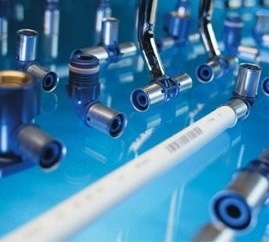Which pipe to choose for the chimney device: a comparative overview of 5 options
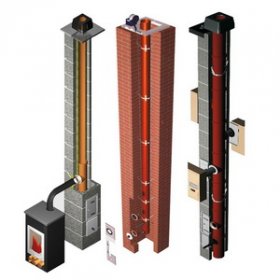
With the advent of the first stoves, people thought about a system for removing hazardous combustion products. Many options have been tried, and the process of creating new ones is not yet over. Modern chimneys differ in a wide variety: in appearance, material from which the device is made, installation location, etc. Choosing the right option is not difficult. It should always be remembered that the chimney must be designed and installed with the utmost competence, ensuring the safety of everyone living in the house. That is why you must first of all choose the right pipes for the chimney.
Before you buy a pipe for your chimney, a careful owner will definitely get acquainted with all kinds of such devices, evaluate the advantages and disadvantages.
From ferrous metal
For the manufacture of the device, welded pipes made of ferrous metal are used. The main advantage of chimneys is their cheapness. On average, such a pipe costs the owner 80% cheaper than a brick. However, there are many disadvantages of such pipes:
- The fragility of the design, provided by the corrosion instability of the material.
- Increased fire hazard due to the rather rapid burning of the walls of the smoke exhaust channel.
- Great weight of the structure.
Increased condensation during operation of the heater.
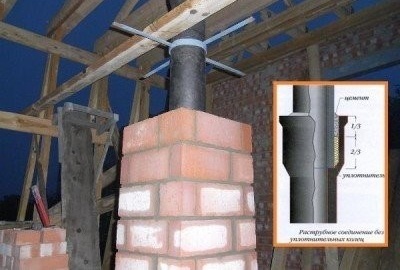
Cast iron pipes can be bricked or painted in almost any color with a special heat-resistant paint. From the inside, the system is most often processed with special compounds that make it especially smooth, which is very important to prevent soot accumulation and facilitate cleaning of the device
In general, the system has more disadvantages than advantages. It is installed in the case when they want to save. However, you need to be prepared for frequent repairs and a short pipe life.
Asbestos-cement construction
They are made on the basis of asbestos, a thin-fiber non-combustible silicate mineral. They are characterized by high corrosion resistance and low cost. Asbestos pipe will cost half the price of a brick. The design advantages end there, but it has many shortcomings:
- Significant reduction in traction, since there is no supporting heat capacity.
- Increased condensation and absorption.
- The inability to operate the structure at high temperatures. If the mark exceeds 300 °, asbestos cement may burst, and sometimes explode.
- The inability to equip inspection hatches and remove soot from the device.
- Extremely vertical mounting method.
The harmful effects of asbestos on the human body.
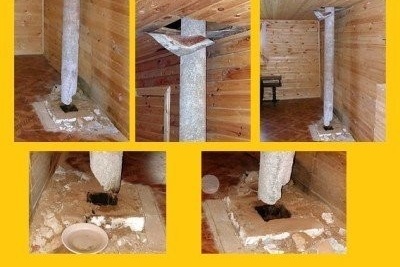
When the temperature rises above 300 degrees, the asbestos-cement pipe can burst and even explode. The consequences of such an explosion are visible in the picture.
Asbestos cement is a rather economical, but short-lived solution for low-power heating devices, upper segments of the smoke channels, designed to pass almost cooled down gases, etc.
Brick chimney
The traditional version of the chimney. Its peculiarity is in the construction during the construction phase of the building, while it can be quadrangular, it is a simpler version, or round. Among the undoubted advantages of the design include its reliability, fire resistance, additional heat transfer and attractive appearance. The disadvantages of the system:
- The rapid accumulation of soot on the rough walls of a brick chimney.
- Heavy weight, which requires installation of the foundation for the structure.
- The gradual destruction of bricks under the influence of acid and condensate, which is especially a lot with improper arrangement of the system.
- Fairly high cost.
In quadrangular structures, vortex flows are formed in the corners that impede the movement of smoke.

The brick structure has internal roughnesses that contribute to the accumulation of soot. To get rid of this drawback, it is enough to install a stainless steel pipe inside the structure
The system is reliable and quite efficient. To reduce the number of its shortcomings is very simple - it is enough to install a single-layer stainless steel pipe in the shaft.
Stainless steel system
It is made of special alloy steel, it is resistant to corrosion in the atmosphere and in almost any aggressive environment. It has many advantages:
- Light weight that does not require a foundation.
- Easy installation, which can be done internally or externally. In the latter case, the structure is fixed to the wall with special brackets.
- Long service life due to high corrosion resistance.
- Smooth inner surface preventing soot accumulation.
- The construction can be installed during construction or mounted in a finished building.
Reasonable cost.
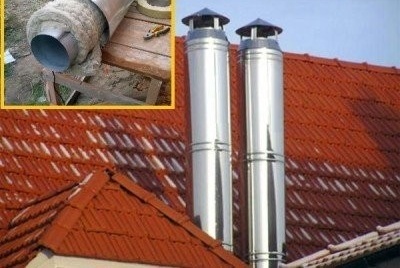
If a stainless steel chimney is mounted externally, it requires additional insulation. Otherwise, due to severe heat loss in the cold season, a large amount of condensate will form.
The disadvantages include the need to warm the pipe, provided that it is mounted outside the house. Otherwise, heat losses occur, leading to the formation of a large amount of condensate, which can damage the heating system. In addition, some do not like the appearance of such chimneys. If desired, you can purchase a special casing that covers the pipe, which imitates any traditional material: tile, brick, etc.
Ceramic device
It is a pipe made of heat-resistant ceramic of increased strength. The design is assembled from several sections and closed with expanded clay concrete shell. The finished system is a stainless steel casing. Advantages of a ceramic pipe:
- High resistance to temperature changes.
- Durability due to high resistance to various types of corrosion.
- Universality, can be used at arrangement of any types of heating devices.
- Good heat storage.
- Smooth internal surfaces that do not allow soot to linger on them.
- Water resistant, not subject to the damaging effects of condensate.
The few disadvantages include the large weight of the structure, which requires additional work during its installation, and increased fragility of the material. Another minus is the high cost ceramic chimney. It should be noted that it fully pays off during its operation. In addition, experts recognize that ceramics is the safest solution for installing a chimney.
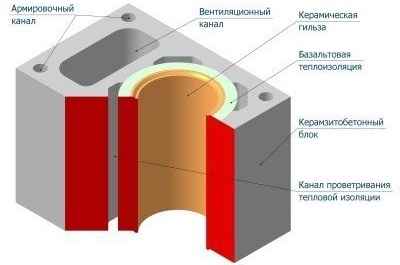
The pipe made of heat-resistant ceramic of increased strength is enclosed in a casing made of expanded clay concrete, over which a stainless steel casing can be worn
It is hardly possible to unequivocally answer which pipe to choose for the chimney. It is necessary to carefully consider all the features of the building and the heater installed in it, for which a chimney is required. In addition, you need to really assess the financial opportunities and make an informed choice. At the same time, you do not need to go to any extremes and blindly chase cheapness. The chimney is the most important element of the heating system, it must be reliable, safe and not cause unnecessary trouble by frequent repairs.


